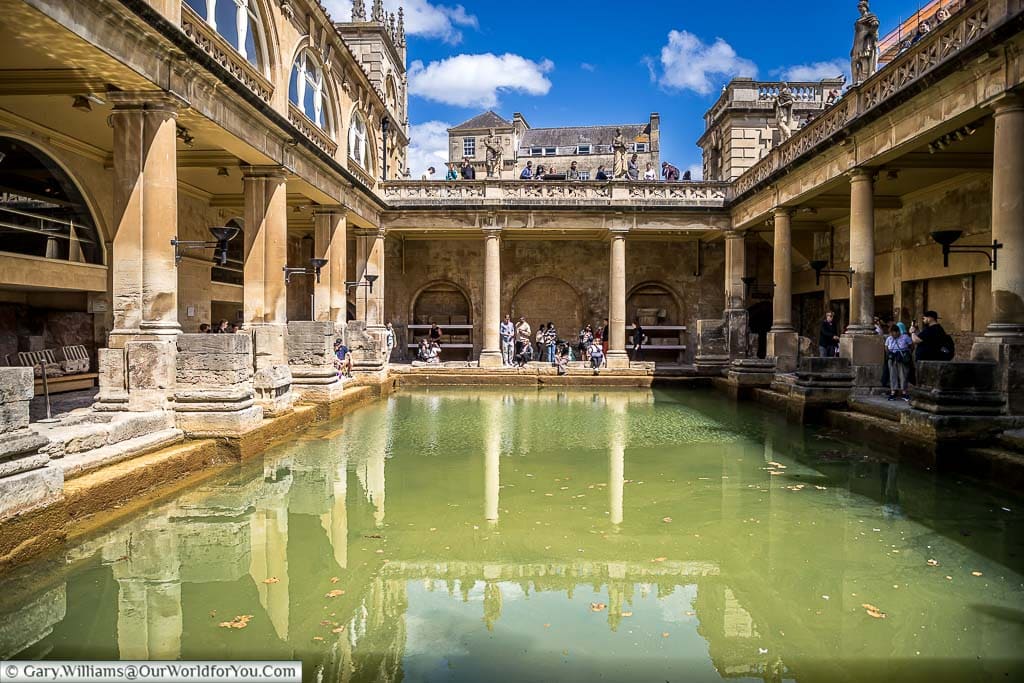A perfect weekend getaway in Somerset
Bath is the ideal mini-break location for a stress-free escape from the norm. This historic city of Bath is perfect for exploring on foot for a couple of days and gives you ample time to kick back and relax in one of Bath’s many parks or pubs.
Bath, the picturesque ancient city in the heart of Somerset, is a UNESCO World Heritage Site and a historian’s paradise.
Around nearly every corner is a fascinating snippet of the past to uncover or another stunning piece of Georgian architecture to admire. When strolling around Bath, you feel like you’ve wandered into an open-air museum.
Bath is a beautiful city and one I would return to without hesitation. Prior to visiting Bath, we made our own list of where we wanted to head to and what inspired us to visit Bath.
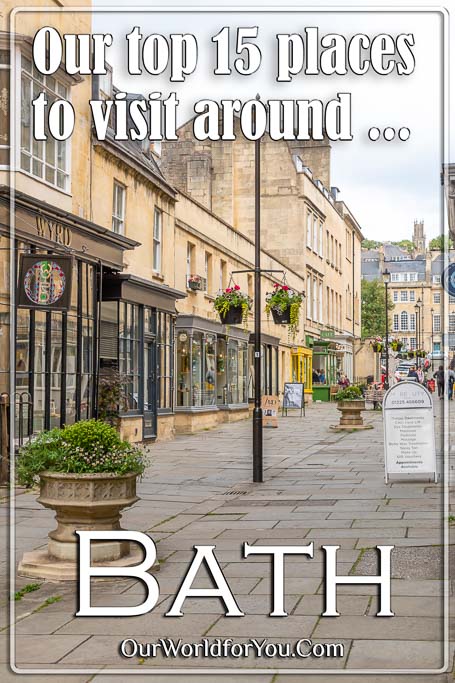
Where is Bath?
How to get to Bath
- By Train
The central railway station in Bath is Bath Spa, just a short hop and you’re in the historic city. A high-speed service runs from London Paddington.
- On Foot
A great place to start is Abbey Churchyard, and explore the city at your leisure.
- By bus or Coach
Arrival by coach or bus, you will be dropped off at Bath bus station. National Express run a regular service from London Victoria.
- By Car
If you are arriving by car, there are many central car parks in Bath, or alternatively, you can use the Park and Ride facility.
If you're intrigued to visit the historic cities of Bath and Bristol, then why not check out Lonely Planet's pocket travel guide. Full of helpful advice, interesting facts and time-saving tips.
You can pick it up for your Kindle or in good old paperback.
Things to see & do in Bath
Visiting the magnificent Roman Baths in the historic city centre was the highlight of our trip to Bath and not to be missed.
The Romans founded the ancient city of Bath in AD 60-70. The Romans progressively enlarged the bathing complex and constructed a vast temple over the subsequent 300 years. The Roman Baths were named after the Goddess Minerva Sulis, and Bath was known in Latin as Aquae Sulis.
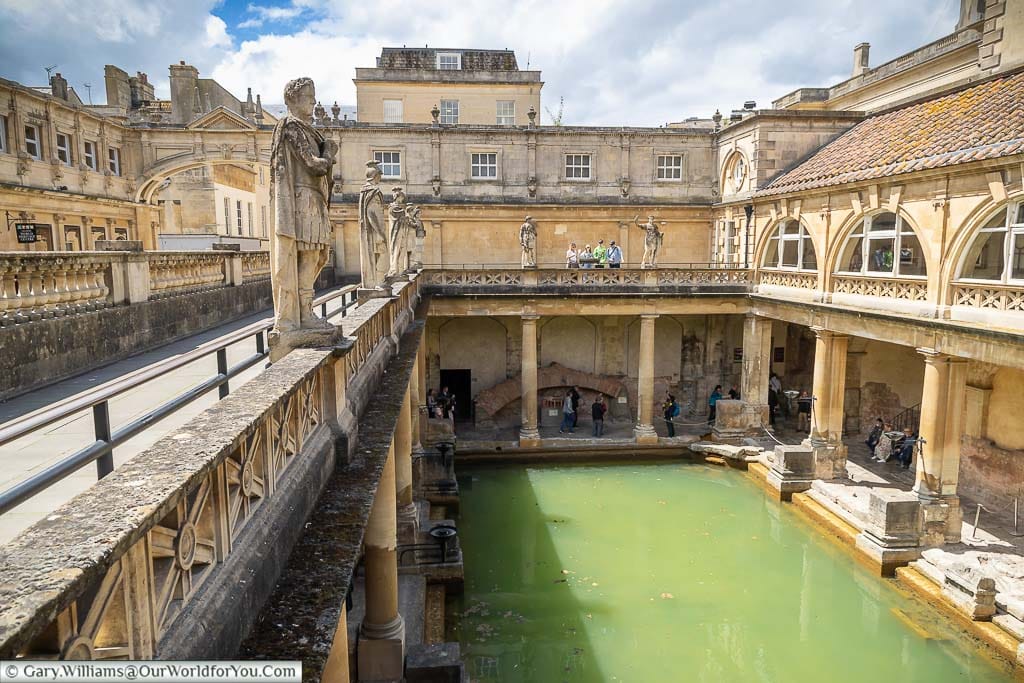
As you wander through the museum, you see how grand the thermal spa would have once looked and how significant Bath was to the Romans.
The Romans continued to use the ancient baths until they departed from Britain in the early 5th – century. After the Romans left Aquae Sulis, it was ultimately abandoned, and the baths became derelict and ruins.
Due to flooding and silting, the baths were lost to the world until the Victorians rediscovered the sacred spring in the late 19th-century.
The striking architecture you see today was constructed by the Victorians, along with the grand statues surrounding the magnificent terrace.
The Great Bath is breath-taking, and when I first stepped onto the upper terrace, I was lost for words; it is incredible.
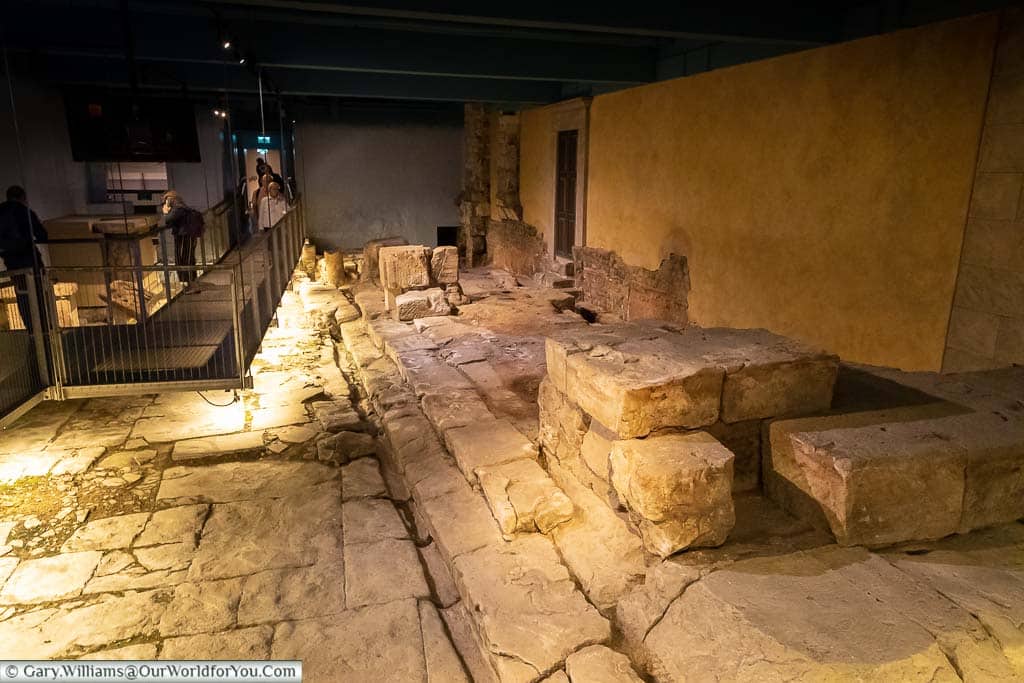
Ensure you pick up the self-guided tour on your visit as it is extremely informative and easy to use; you can stop and start it as you wish.
Don’t be fooled into believing your visit just entails visiting the Great Bath; there is so much more to explore within the museum.
The sacred grounds of Bath Abbey were founded during the 7th-century. Originally a Benedictine monastery stood on the site, the Abbey Church of Saint Peter and Saint Paul has been rebuilt and restored through the ages of time.
Bath Abbey is a delightful centrepiece to Bath’s skyline and is a magnificent sight inside and out.
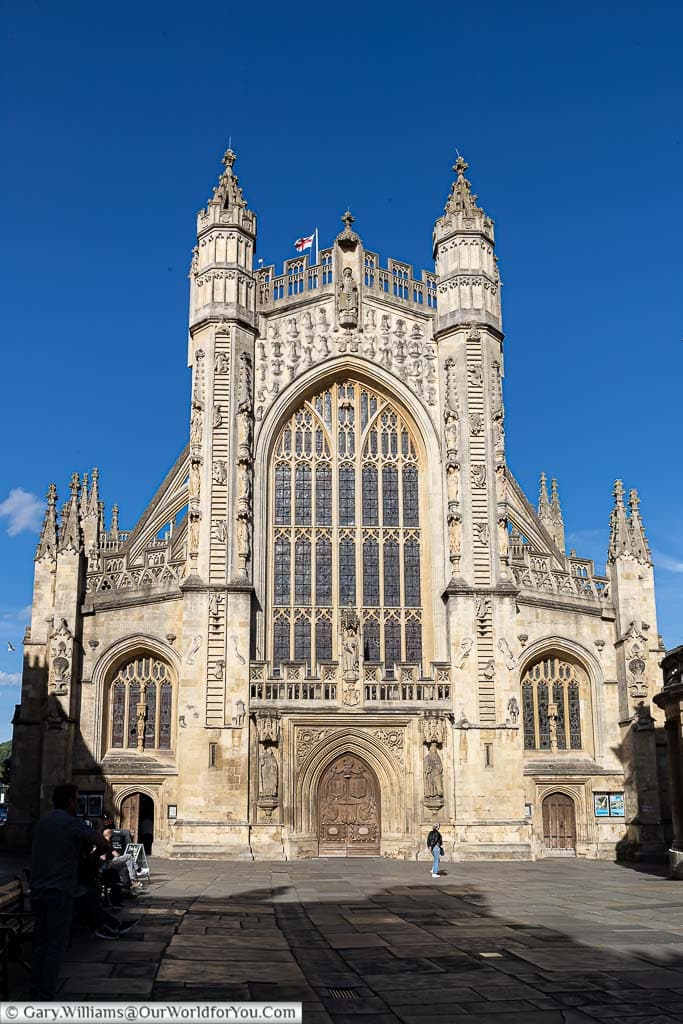
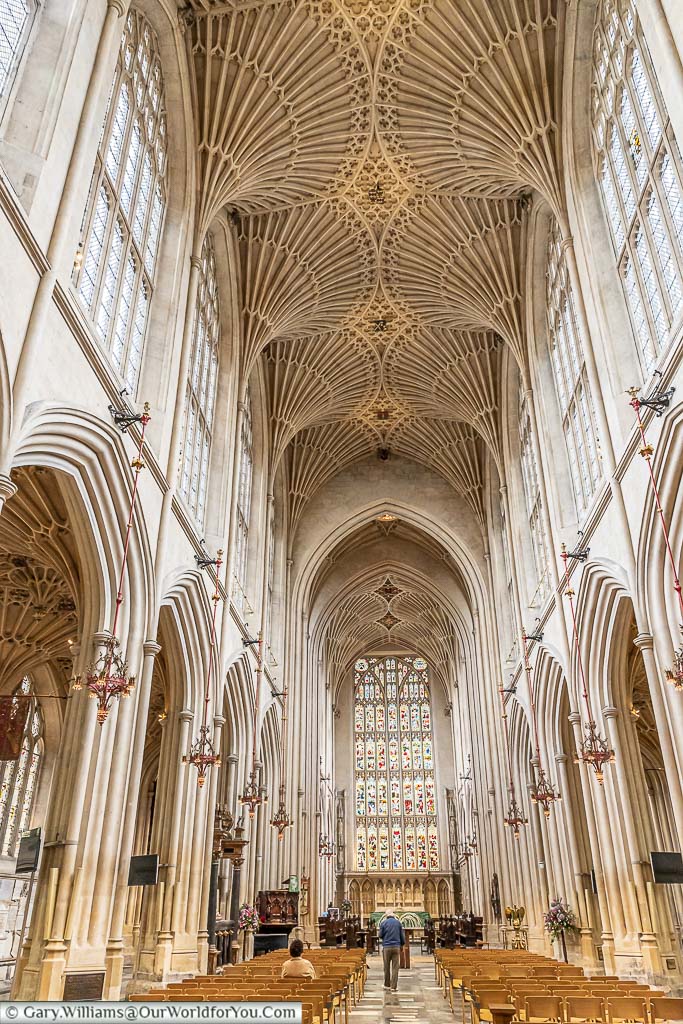
Approaching the Abbey from Abbey Churchyard, you can see the unique Jacob’s Ladder on either side of the entrance, stretching high above. Jacob’s ladder on the west front of Bath Abbey is so charming; all the way up the stone ladder are carvings of angels climbing the stairway to heaven.
Bath Abbey is free to visit; however, a small donation is welcome, and it’s certainly worth it. It is beautiful when you step inside, and the fan vaulted ceiling is stunning.
The abbey is relatively light inside due to many windows throughout the church and has a magnificent stained-glass window above the altar.
If you’re lucky, you may catch the organist playing the Klais Organ, which has 4,000 pipes and sounds enchanting.
The sweeping Royal Crescent in Bath is so iconic to the city, and as it is free of charge, so, you wouldn’t want to miss it.
The 30 elegant Georgian terraced homes around the Royal Crescent are impressive. The Grade I listed houses were designed by the architect John Wood, the Younger; they were built of Bath stone and erected between 1767 and 1774.
The Georgian townhouses were constructed in a horseshoe arc and certainly portrayed the wealthy lifestyle of Bath during this period. They even had their own private lawn to saunter through.
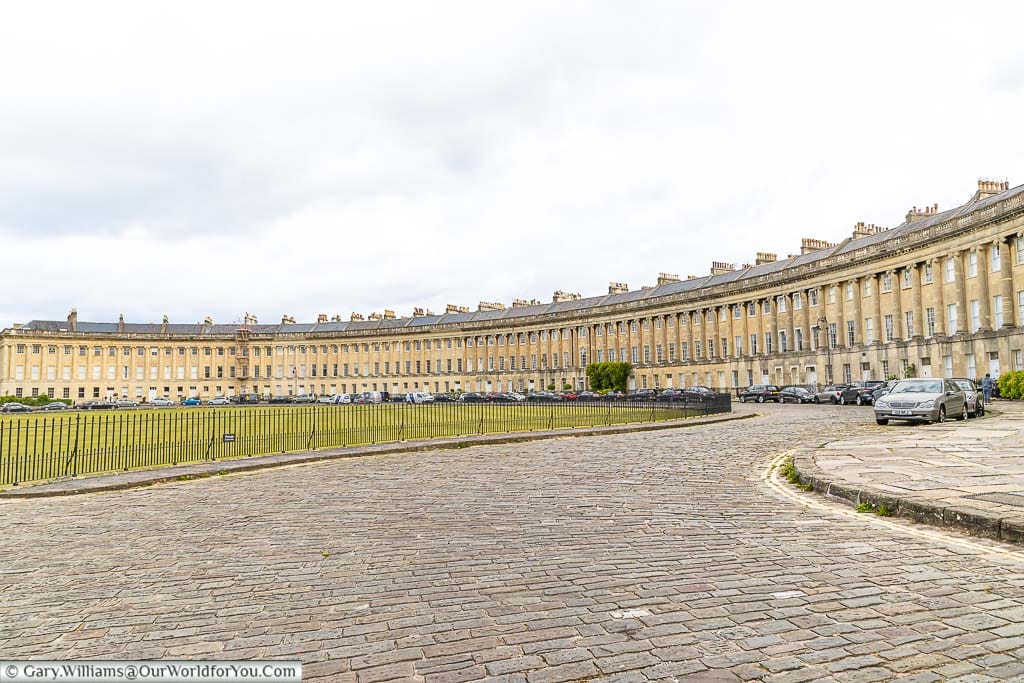
It is important to understand that during this period in British history, when these Georgian townhouses were built, the British Slave Trade took place. Consequently, Royal Crescent in Bath was constructed mainly from the proceeds of this awful time in our history.
The imposing crescent stretches 150 metres (500 feet) in a semi-circle and has 114 grand columns throughout. It certainly makes a statement.
If you’d like to visit one of these grand homes and enjoy a fly-on-the-wall experience, take a look at item no.5 below and tour No.1 Royal Crescent.
Although Bath is a reasonably small city, it has a few distinct structures that you immediately associate with Bath, and Pulteney Bridge is one of them.
The striking Georgian bridge was designed by Robert Adam and erected in the late 18th-century. It was built in the Palladian style and constructed from the honey-coloured Bath Stone, which can be admired throughout Bath.
The captivating bridge spans the River Avon, is 148 ft (45 m) in width, and has three individual arches. Pulteney Bridge is also the backdrop to the tiered weir, which sits at its feet.
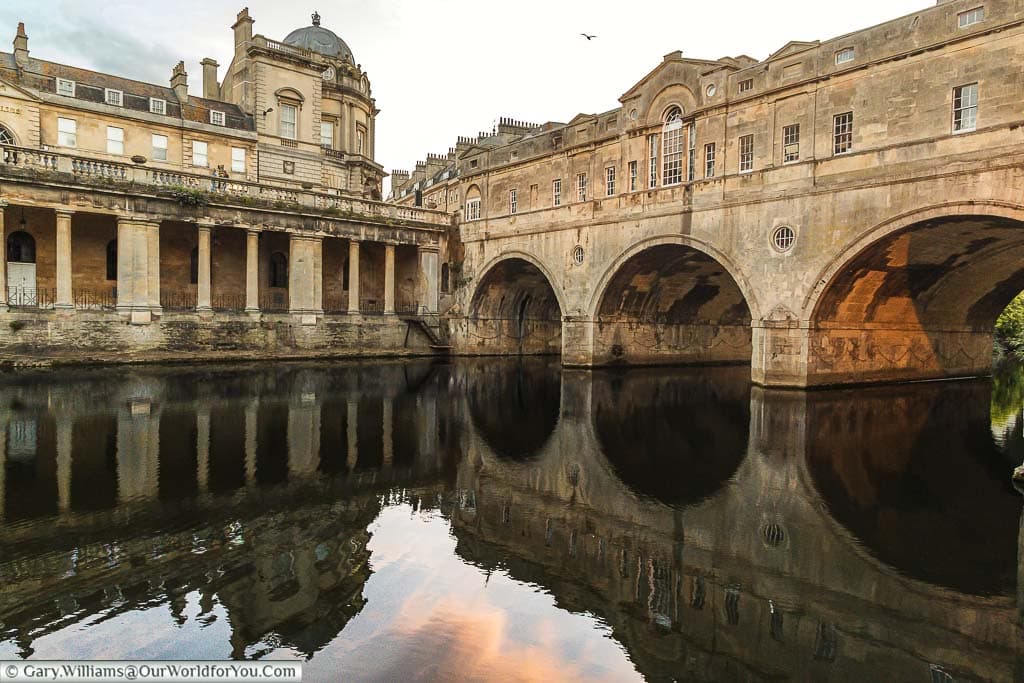
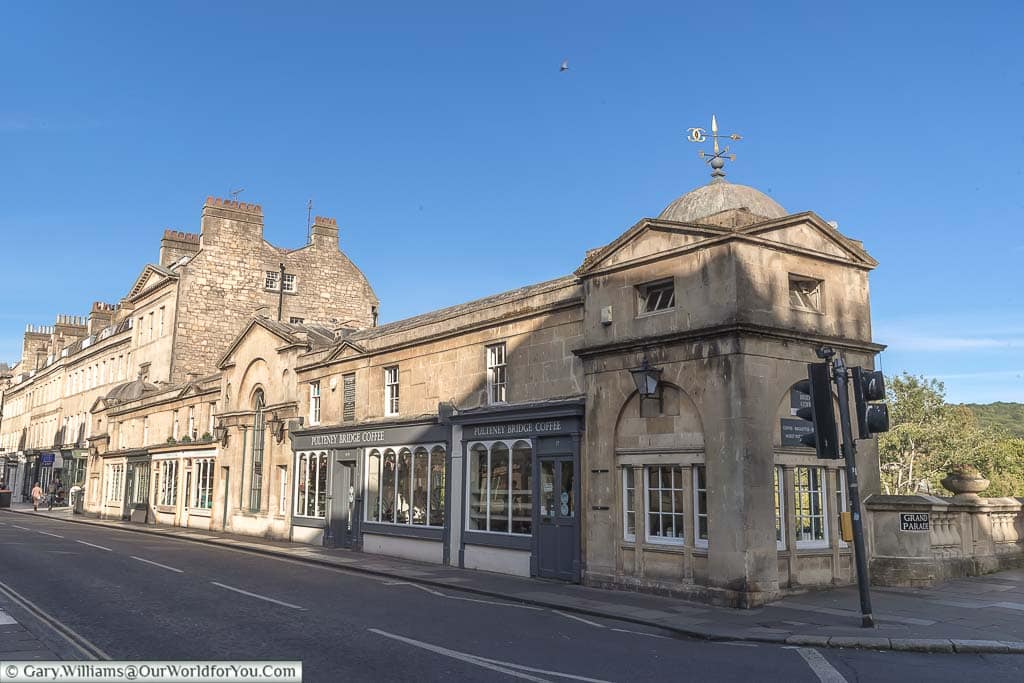
Tourist Information
Returning to Royal Crescent, we embark on the informative tour at No.1 Royal Crescent.
The ‘Georgians at home in Bath’ tour is a captivatingly immersive experience and has been so well designed.
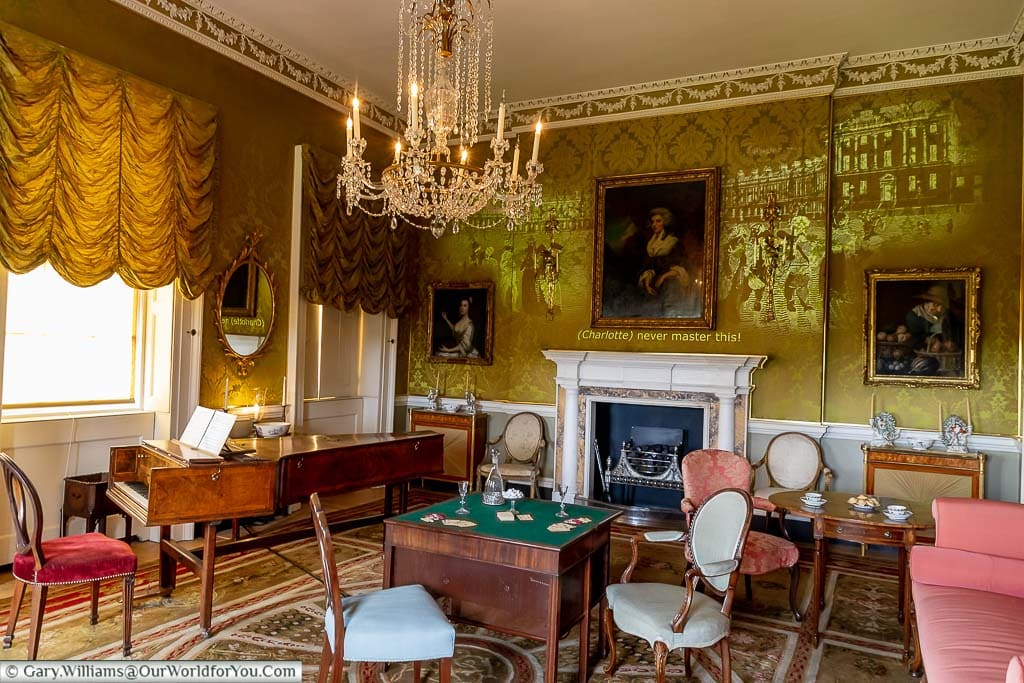
The majestic townhouse of No.1 Royal Crescent has been styled and furnished to replicate the lives of those living upstairs and downstairs during the late 18th century between 1776 and 1796.
The experience at No.1 Royal Crescent is brought to life through sight and sound. In each room you stroll through, you are eavesdropping on the conversations of a wealthy Georgian family’s trials and tribulations. All the while admiring the thoughtfully presented museum.
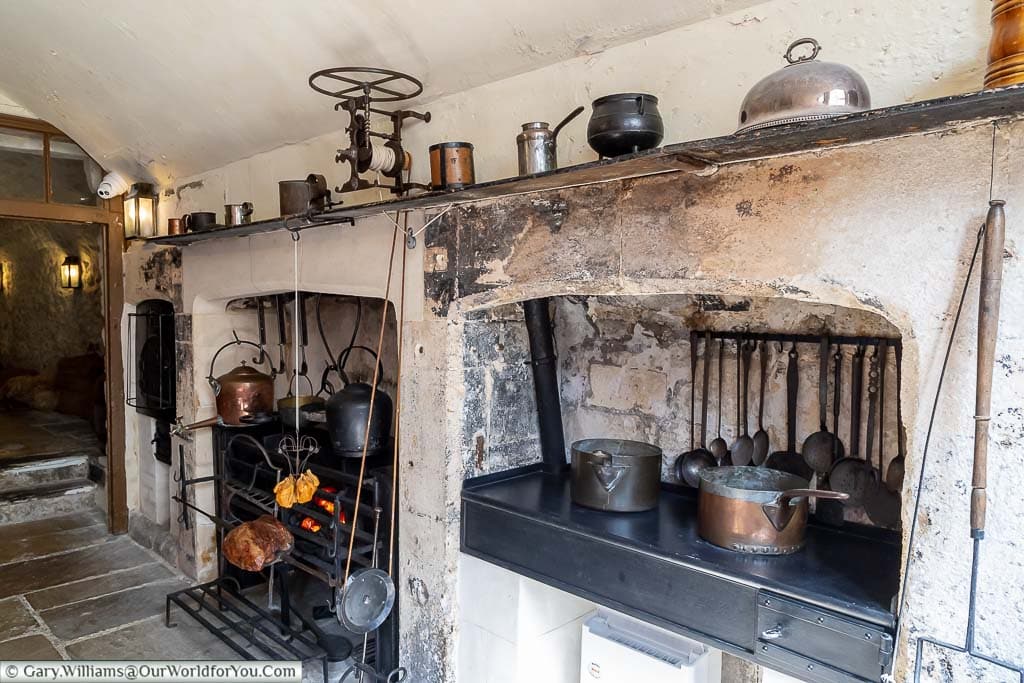
Not only do you get to listen to the social high life of the folks upstairs, but the tour also leads you below stairs to understand how a servant’s life would have been in the late 18th-century.
I highly recommend the tour; it’s certainly one to add to your list of places to visit in Bath.
Where to stay in Bath
The Holburne Museum in Bath is located in a grand house at the far end of Great Pulteney Street. Stroll over Pulteney Bridge and keep walking; slowly, the beautiful museum comes into view.
Holburne Museum was established in 1882 and was Bath’s first public art gallery. It houses the amazing art collection of Sir William Holburne. As well as pieces of work by Gainsborough and Stubbs, it also displays collections of fine porcelain, silverware and period furniture.
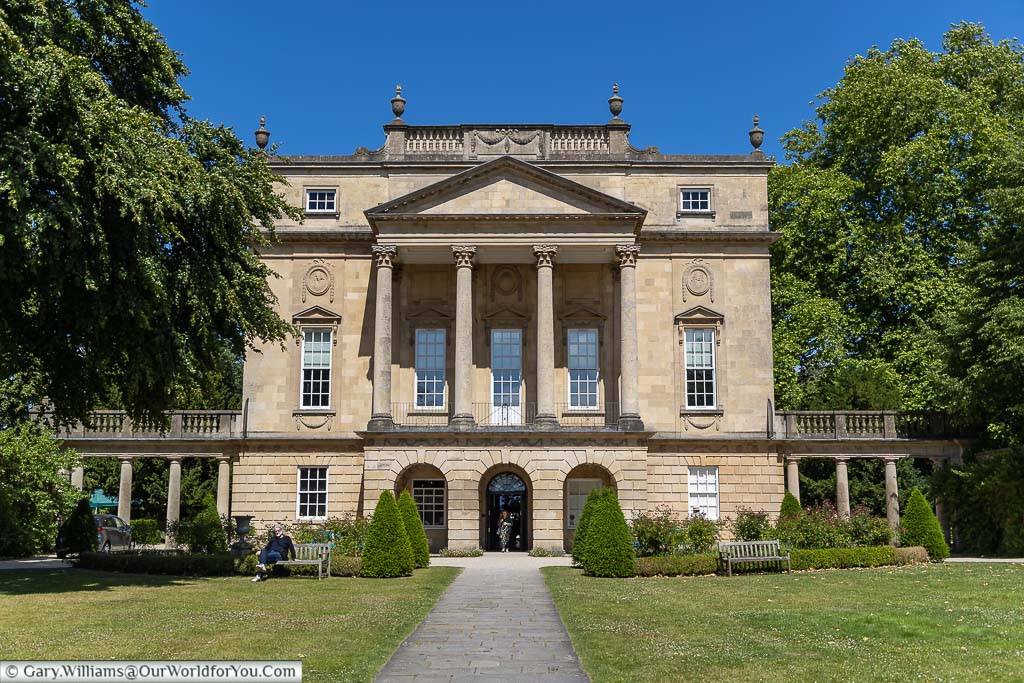
Throughout the year, temporary exhibitions are held in the Holburne Museum; we caught the David Hockney Love Life Drawings, which are currently on display.
The eagle-eyed amongst you and fans of the period drama Bridgerton will undoubtedly recognise the Holburne Museum, which is used as the home of Lady Danbury.
Sally Lunn’s Eating House is located along North Parade Passage in one of Bath’s oldest buildings which dates from 1482.
Sally Lunn was a Huguenot, and she came to Britain in 1680 to escape persecution in France. Sally Lunn began to bake her rich buns in a local bakery, similar to brioche buns, then et voila, the Sally Lunn Bunn was created.
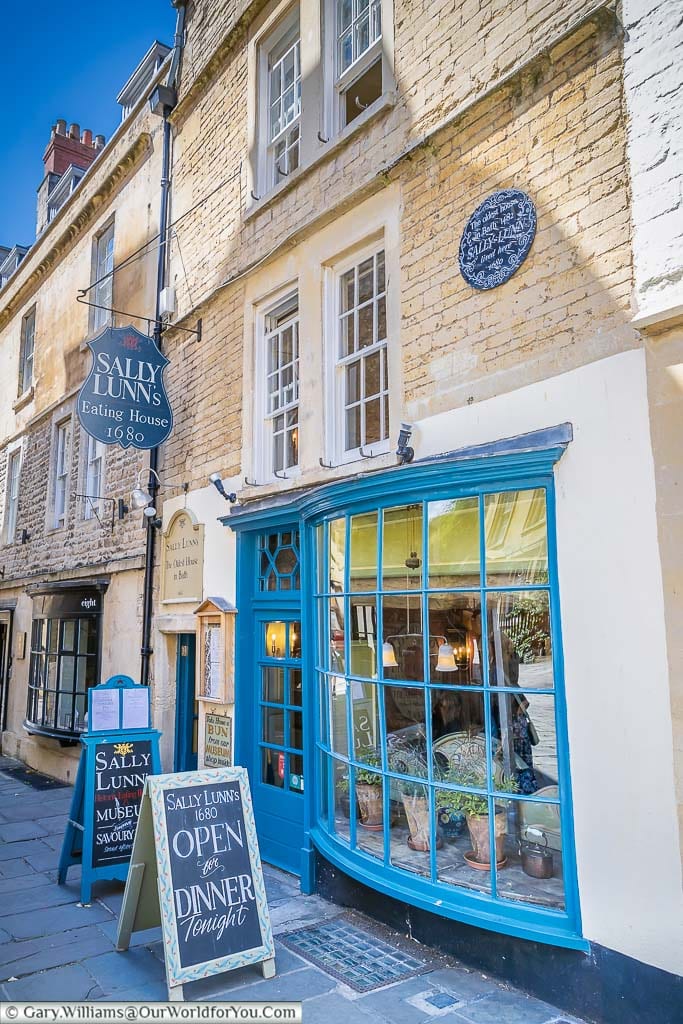
There are many versions of this bun around the world, but I like to believe that it all started in Bath.
The Sally Lunn Bunn can be enjoyed sweet or savoury, from a delicious tempting topping of cinnamon butter to a Sally Lunn Bunn topped with traditional cured salt beef and honey mustard sauce.
A piece of advice that I will add is to ensure you make a reservation, or you may be in for a long wait.
The Fashion Museum, owned by Bath and North East Somerset Council, is housed within the historical Assembly Rooms, managed by the National Trust.
The fashion historian Doris Langley Moore founded the world-class collection of haute couture. When the museum opened in 1963, it was called the Museum of Costume; in 2007, the collection was renamed the Fashion Museum.
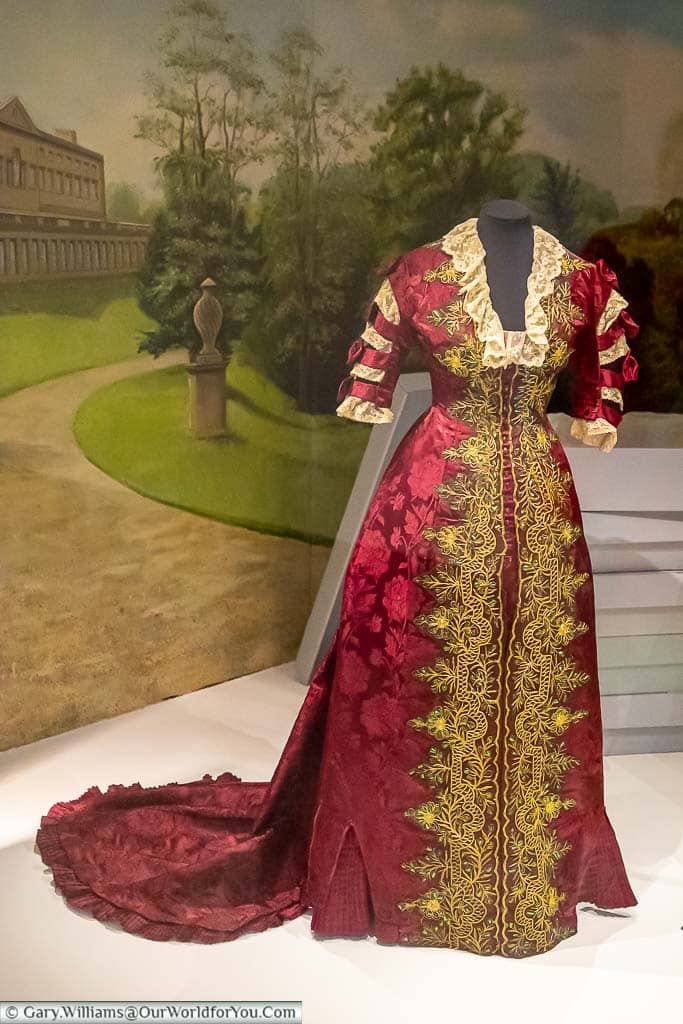
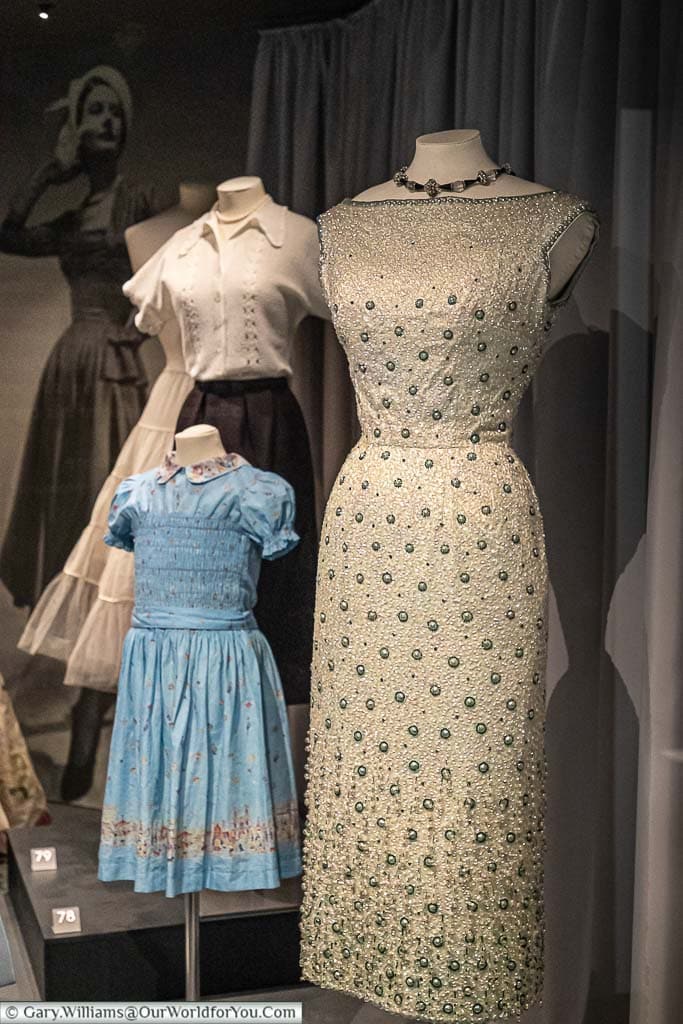
The collection has over 100,000 items, some of which date from around 1600. It’s a fascinating museum and guides you step by step through the historical changes in dress wear and how styles have evolved over the centuries.
Every year since 1963, a fashion expert has chosen a Dress of the Year; in 2021, it was selected by Ibrahim Kamara and Gareth Wrighton and chose a dress by Giorgio Armani.
In late 2022 the Fashion Museum is moving to a new home; check their website for the new location.
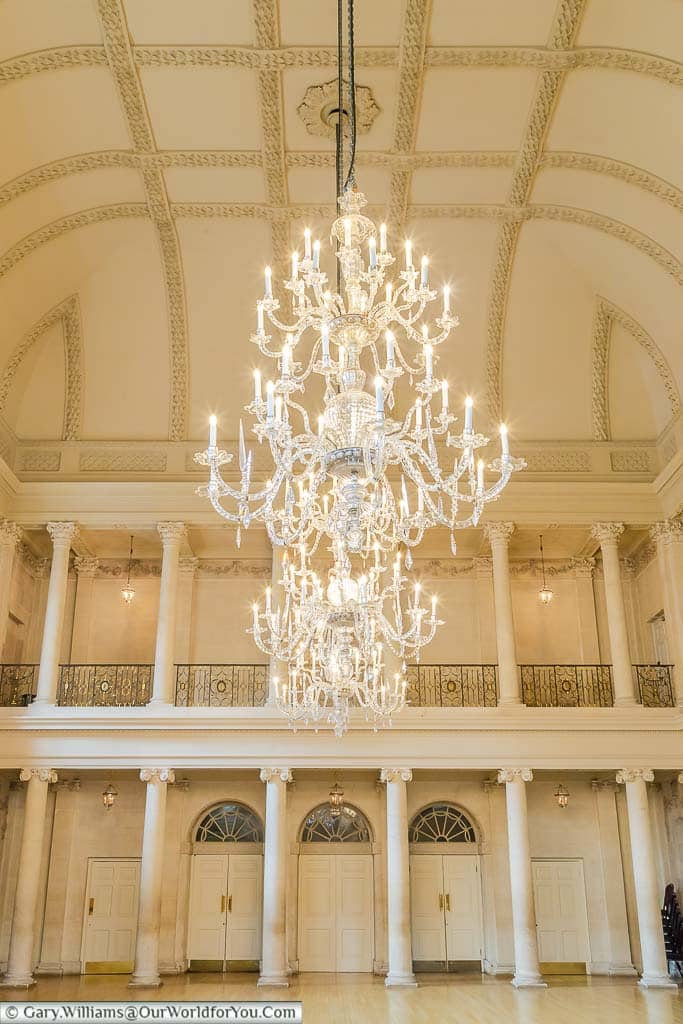
Once you’ve visited the Fashion Museum, take a peek at the beautiful rooms in the Assembly Rooms.
The Georgian Bath Assembly Rooms were designed by John Wood the Younger in 1769, the same gentleman who designed Royal Crescent.
The rooms in this grand building would have been frequented by the high society of Bath. The elegant rooms were used for balls, parties and many social occasions, including enjoying a cup of tea, which in Georgian times was very expensive.
Bath’s magnificent Georgian architecture can be found around almost every corner. The local honey-coloured Bath Stone is used greatly throughout Bath and provides such a unique style.
The Circus in Bath is a majestic ring of lavish townhouses designed by John Wood the Elder and built between 1754 and 1768.
The Circus forms a circle with three entrances and is 318 feet (97m) in diameter with a lawn in the centre. The curved façade contains classic columns interspersed with a frieze containing 525 symbolic emblems.
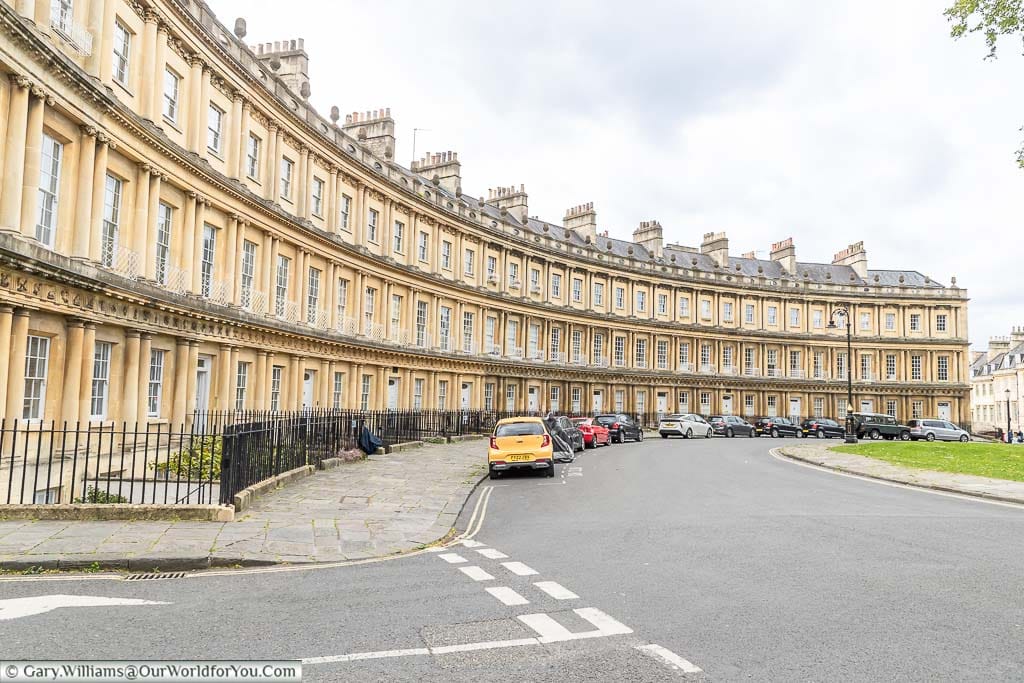
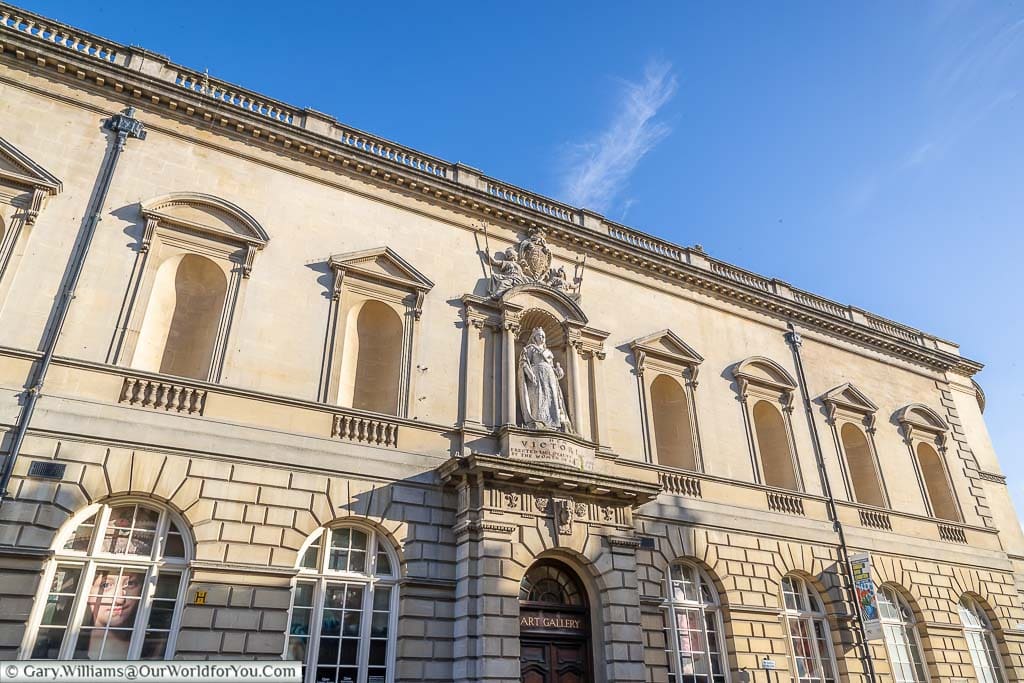
The charming public art museum holds over 1500 objects in its collection, which contains pieces of work from British artists, including Thomas Gainsborough.
As well as the classic pieces of art on permanent display in the Large Upper Gallery, there is also the Small Lower Gallery which houses an everchanging collection of contemporary art.
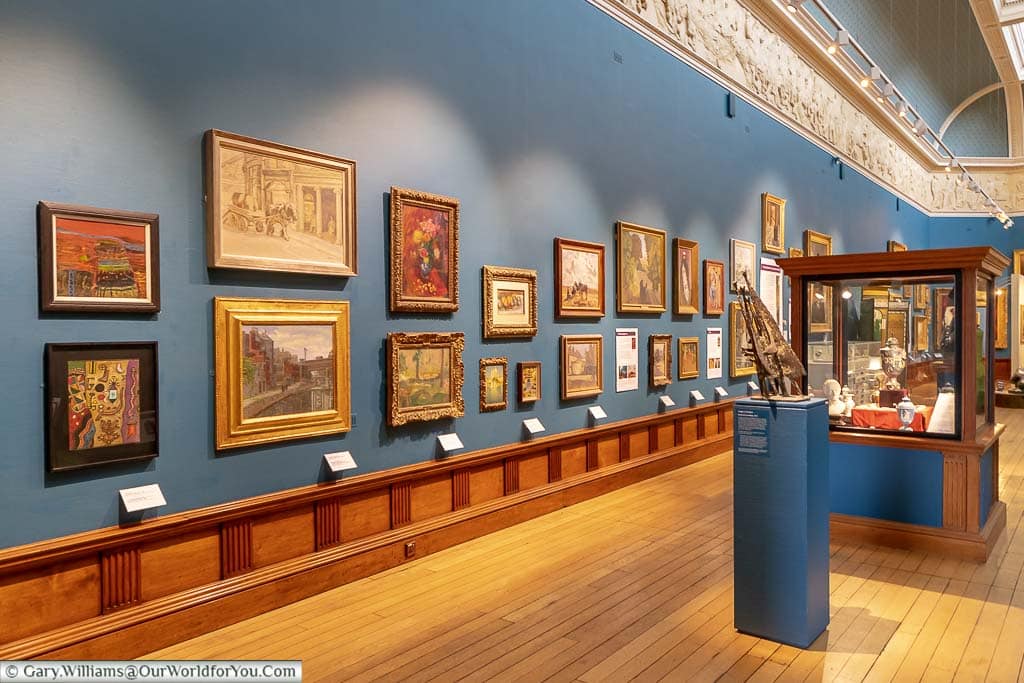
If time permits, take a wander along the Kennet and Avon canal; it’s so peaceful and tranquil. You may even be tempted to embark on your own canal boat holiday as we did.
You can head over Pulteney Bridge and amble along the canal from there. Alternatively, I suggest once you’ve visited Holburne Museum, stroll towards the canal along Raby Place, and you can wander back into historic Bath from there.
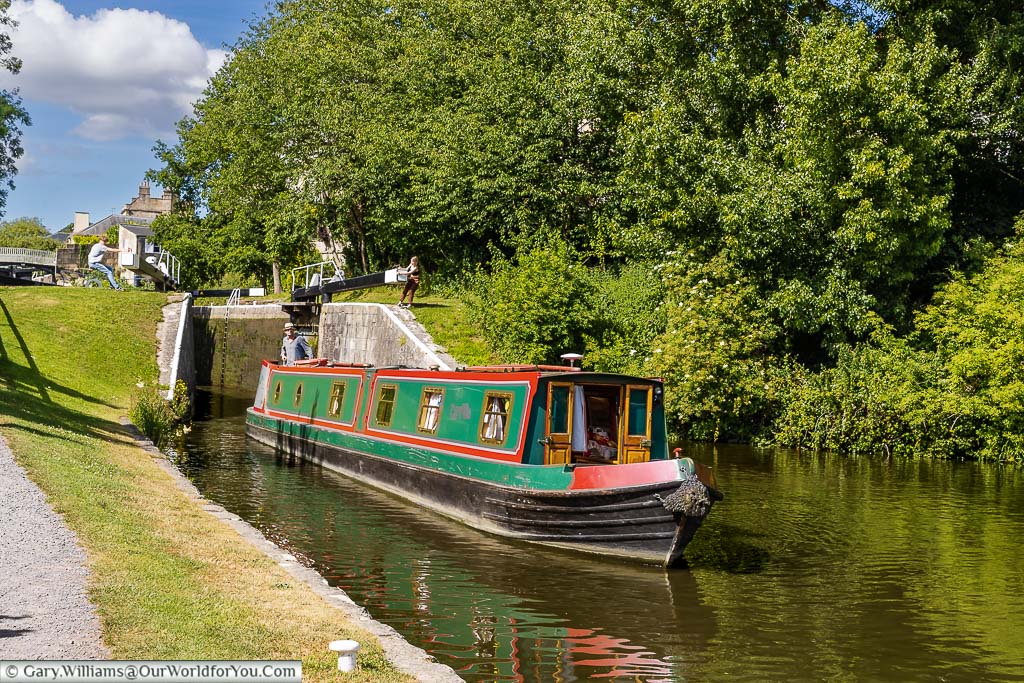
It’s such a pleasure strolling around Bath; it is incredibly easy to navigate on foot.
Ensure you seek out The Corridor, Northumberland Place and Union Passage. The Corridor was designed in 1825 and became one of the world’s first retail arcades. Take a stroll through the marble columns, and you’ll discover a charming glass-roofed shopping passageway.
All around the delightful lanes are boutiques, cafés and bars to keep you entertained.
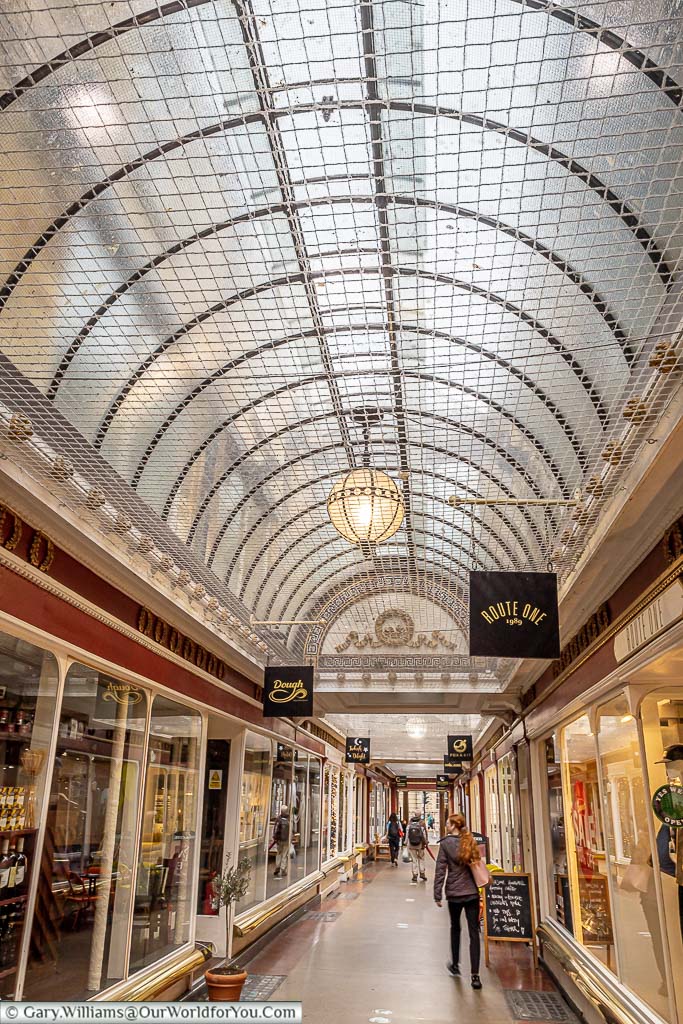
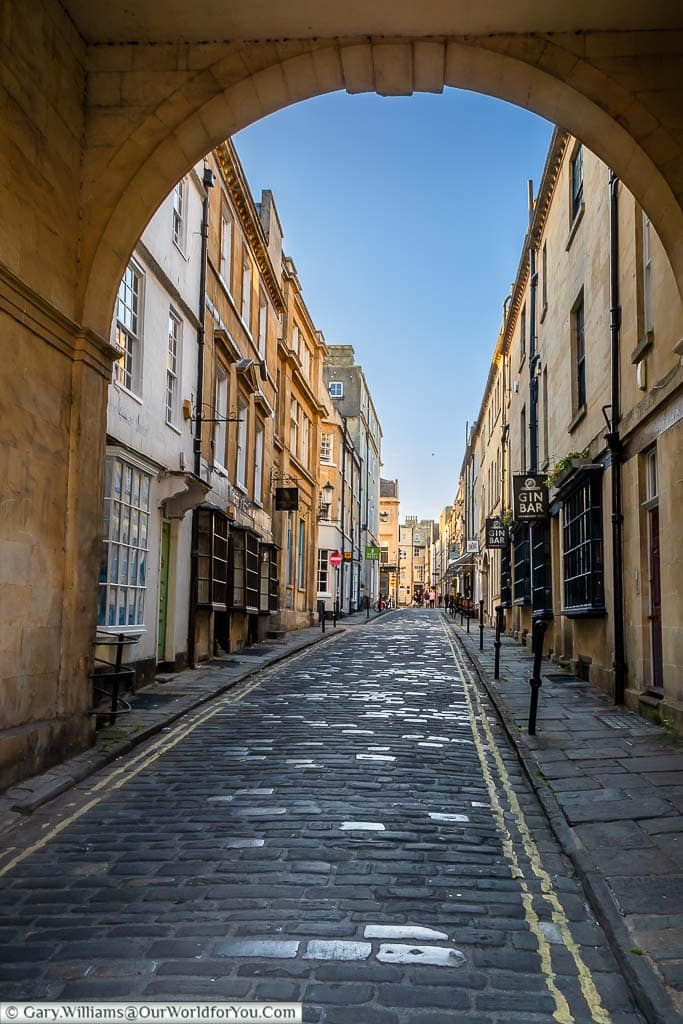
Just opposite The Corridor entrance is Bath Guildhall; inside, you’ll discover a covered market. Take a wander inside; there is a lovely mixture of stalls from a traditional hardware stall, a sweet shop, food stands and charming stall selling French delicacies. There has been a market trading on this site for 800 years.
Another region of historic Bath not to be missed is all around Walcot Street. This area is a little less touristy and has some lovely shops and restaurants to visit.
Join a Bath walking tour
During this fascinating 2-hour walking tour of Bath, you’ll discover the many delights of the ancient city and its magnificent Georgian architecture. Stroll around the Circus and the Royal Crescent and enjoy the charm of Pulteney Bridge.
If you select the option to include the visit to the breath-taking Roman Baths, then you’re in for a treat.
One thing I did notice about Bath was that it had quite a lot of open green space and plenty of seating.
There was a delightful garden behind the Holburne Museum named Sydney Gardens. Queen Square Garden was a pleasant place to sit, as also Royal Victoria Park and Parade Gardens.
Royal Victoria Park was opened in 1830 by a young Princess Victoria, seven years before she became Queen. The public park is 57 acres in size; it has a botanical garden, a golf course and putting green, tennis courts, adventure golf and plenty of places to sit and watch the world go by.
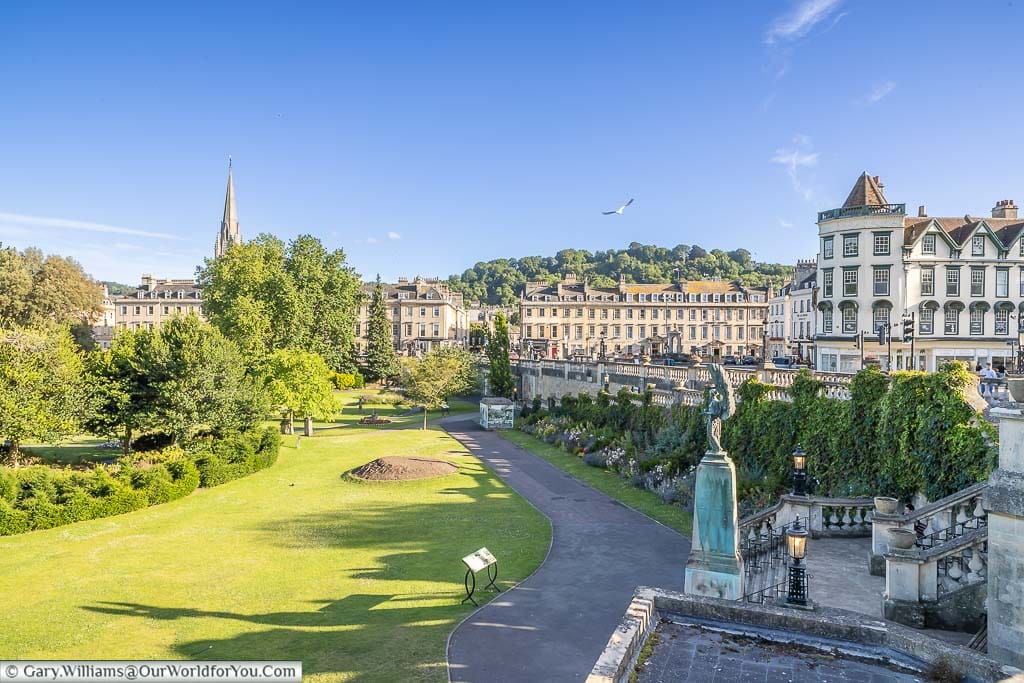
Another delightful garden is Parade Gardens; it is only two and a half acres in size and borders the River Avon. It has a magnificent view of Pulteney Bridge and the weir, a central bandstand and colourful flower beds.
There is a small charge to visit Parade Gardens unless you are a Discovery Card holder, then it’s free.
Another notable point, in my opinion, is that the people of Bath love a pub.
I was amazed at how many pubs we spotted and, perhaps on occasions, frequented; there was something for everyone, from the bars and pubs selling craft beer and specialised ales to your local boozer offering traditional tipples and pork scratchings.
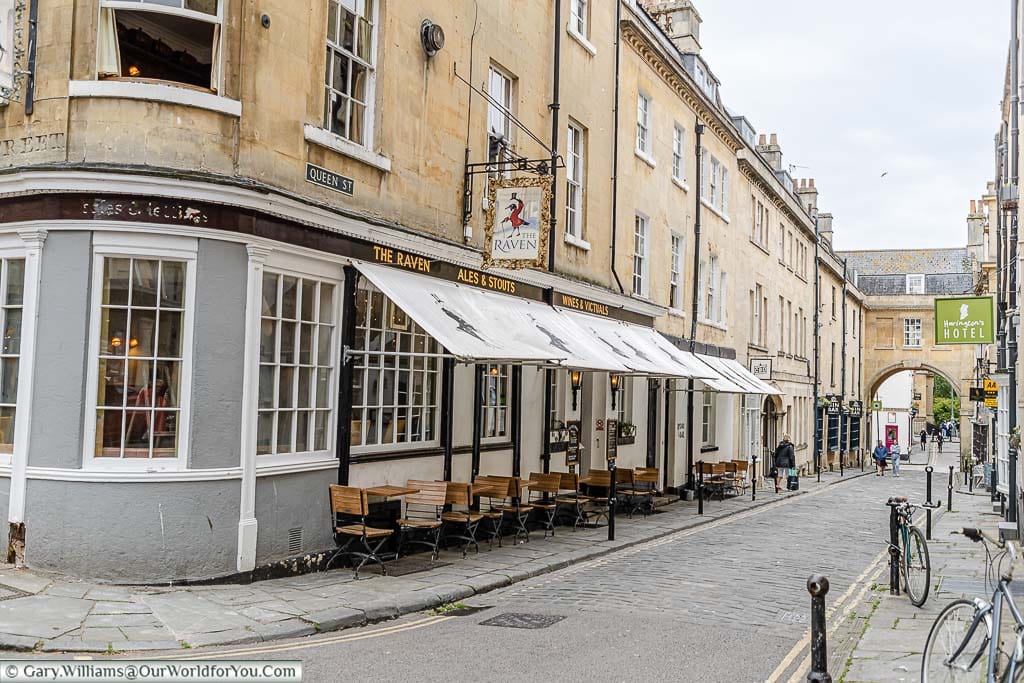
Of course, we visited a couple of pubs for research purposes only: The Grapes, The Bath Brew House, The Volunteer Rifleman’s Arms and The Raven. They all offered something a little different.
I think the ones that stood out for us were The Grapes, The Raven and The Volunteer Rifleman’s Arms, friendly staff and good beers.
Nearby Bath is Lacock Abbey, Fox Talbot Museum and Village, managed by the National Trust.
Lacock Abbey was founded in the early 13th-century and an Augustine nunnery was formed. Around two hundred years later King Henry VIII’s dissolution of the monasteries put pay to its continuance and was sold to Sir William Sharington.
The house continued to be passed to wealthy families and was ultimately sold to the Talbot family. It’s at Lacock Abbey, where William Henry Fox Talbot resided and invented the first photographic negative.
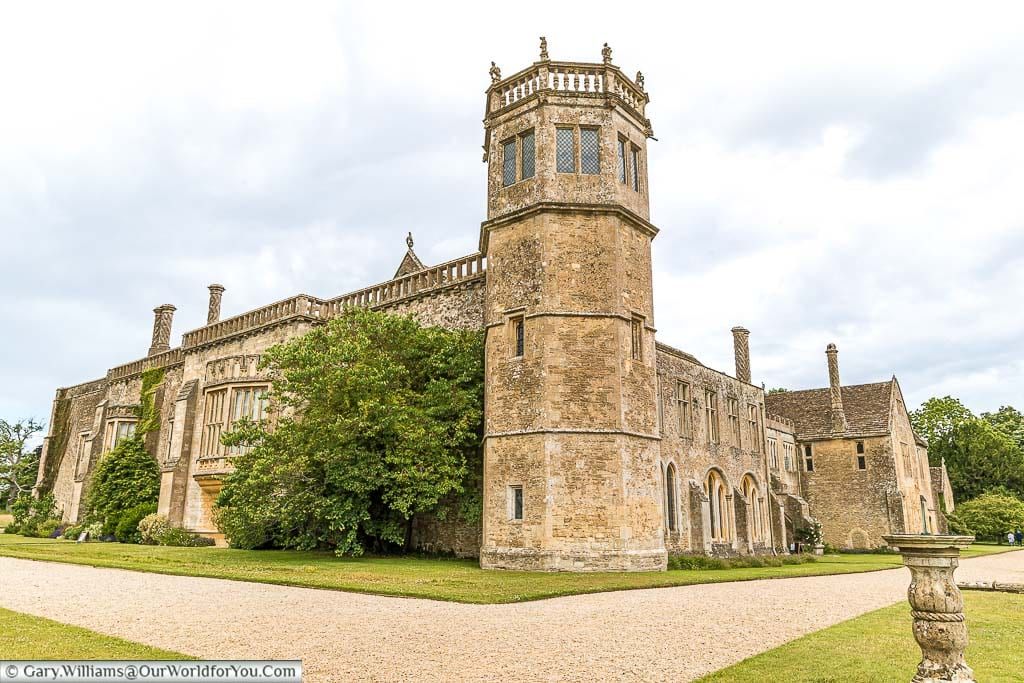
Within Lacock Abbey, the charming medieval cloisters and chapter house that dates from the 1400s still survive.
Harry Potter fans may recognise the cloister from the Philosopher’s Stone movie.
Not only does the National trust manage Lacock Abbey they also maintain the tiny village of Lacock. There are only four streets in Lacock; however, the village’s appearance hasn’t changed in over 200 years.
Lacock is a gorgeous village with many of its traditional quaint stone cottages still being lovingly maintained.
If you are on a road trip around The Cotswolds, you could detour to Lacock Abbey while visiting Castle Combe.
Disclaimer
* This post may contain links to affiliated sites where we earn a small commission at no additional charge to you.

